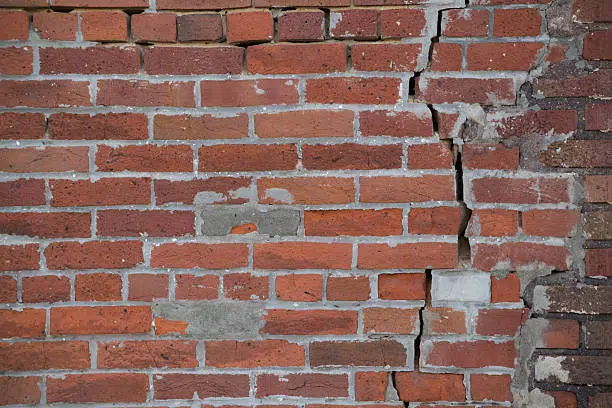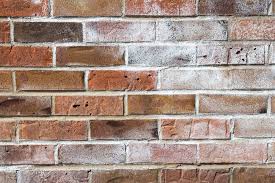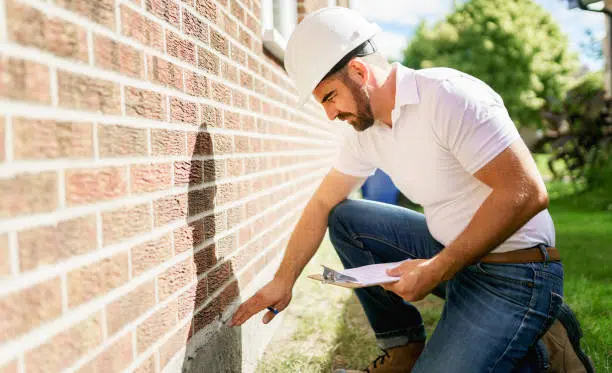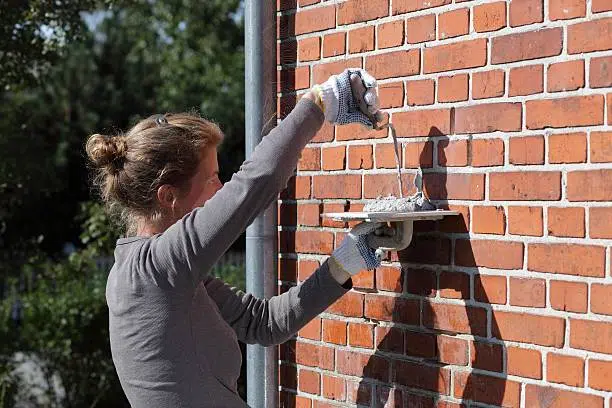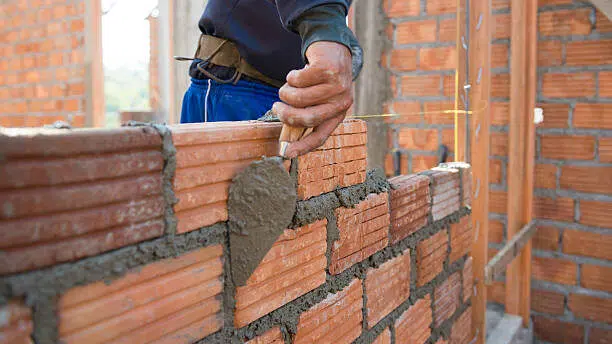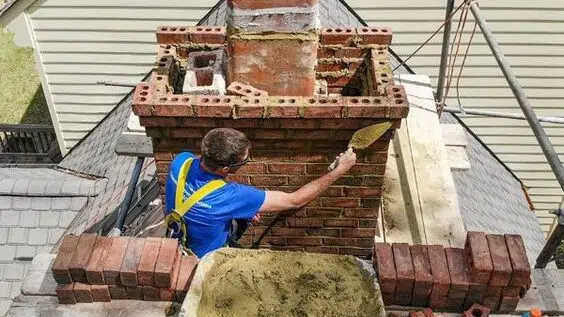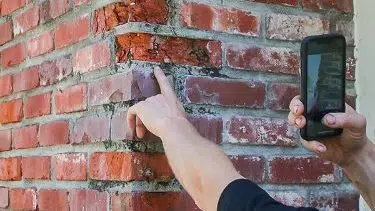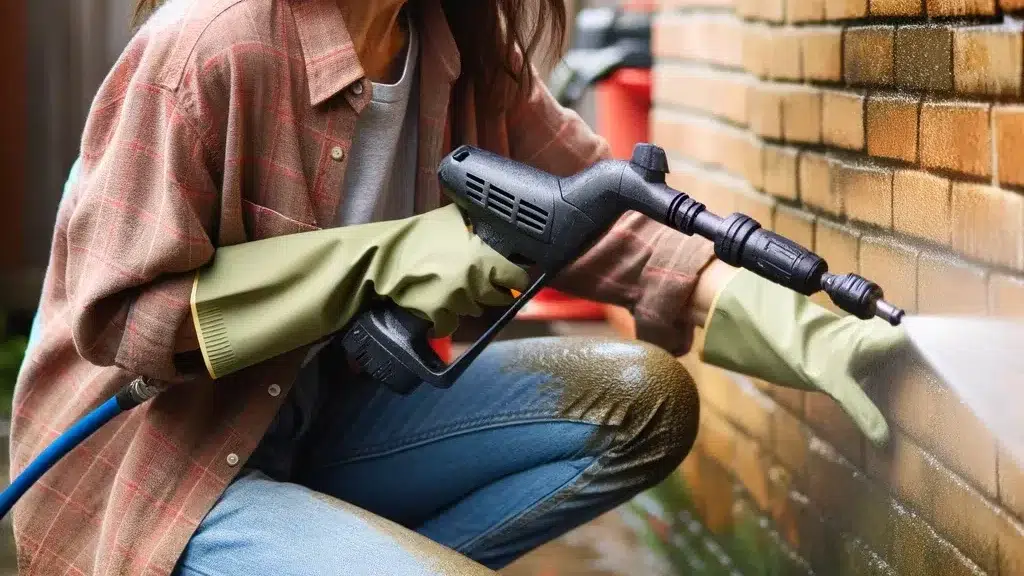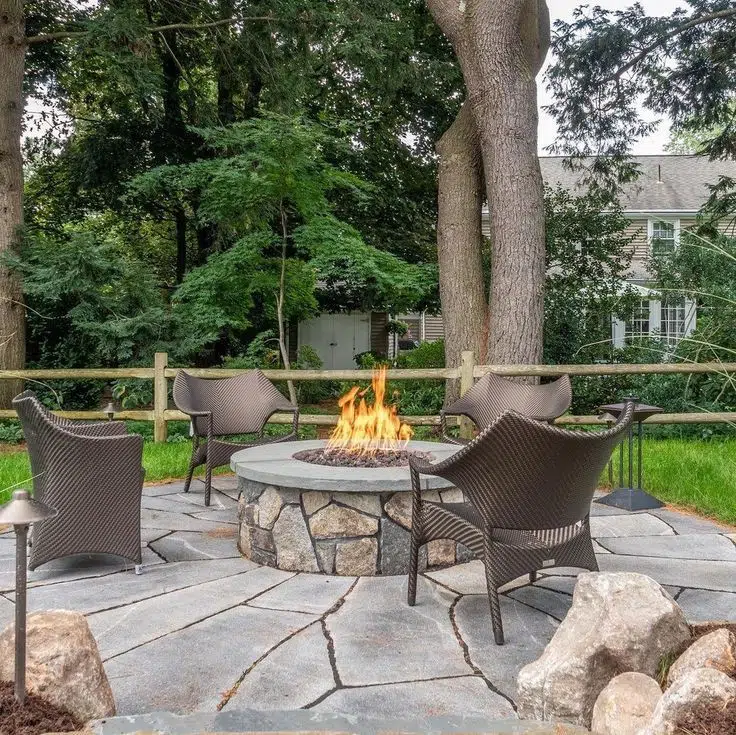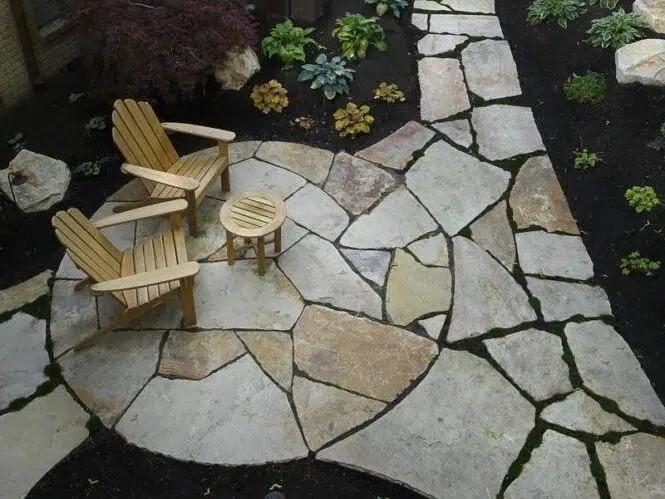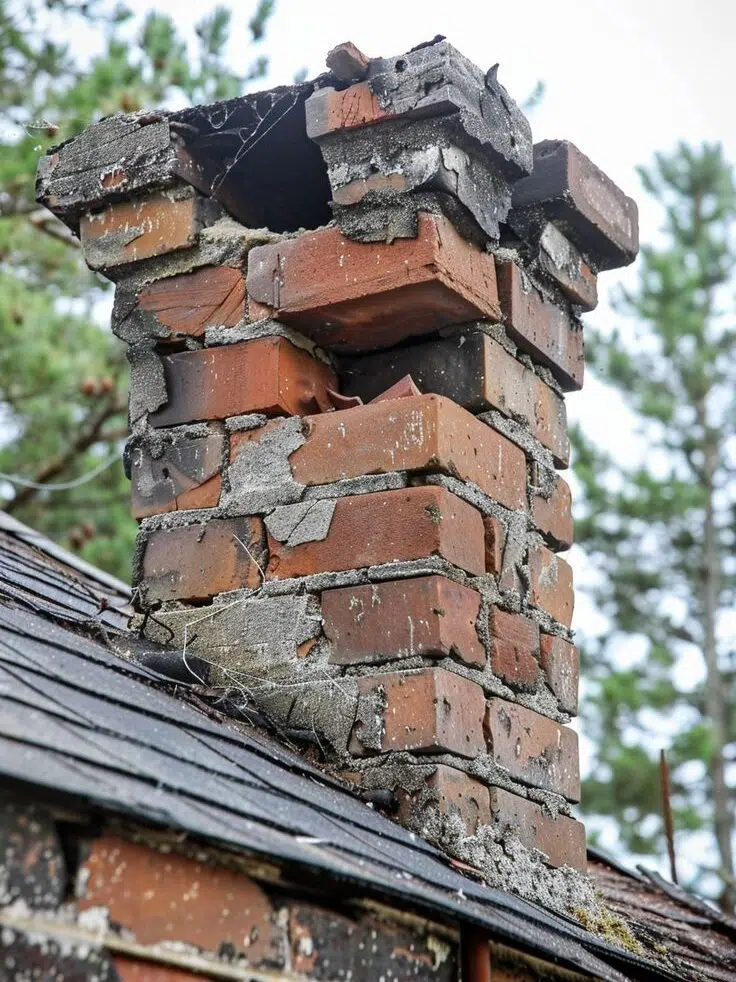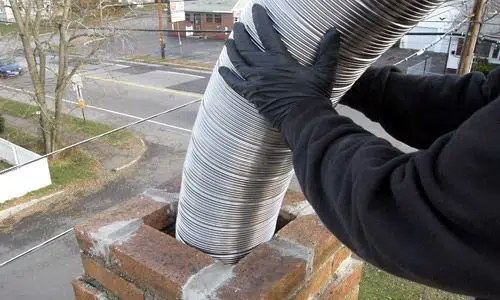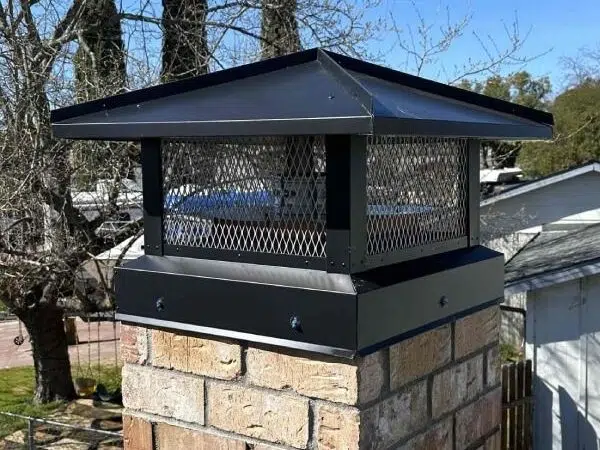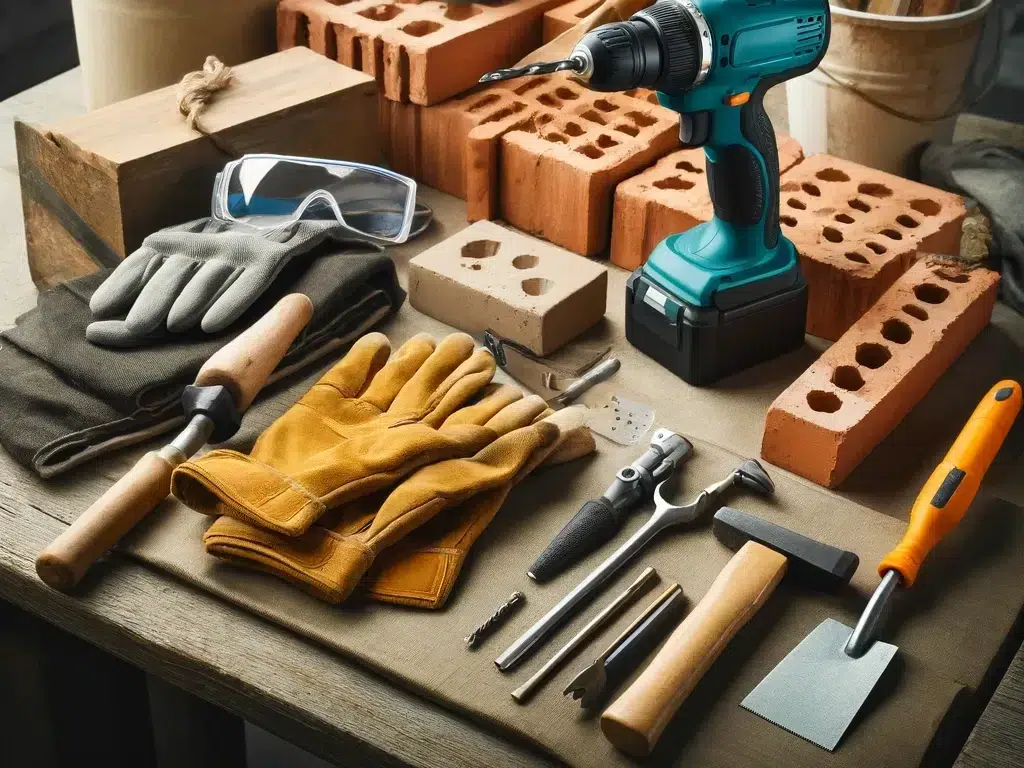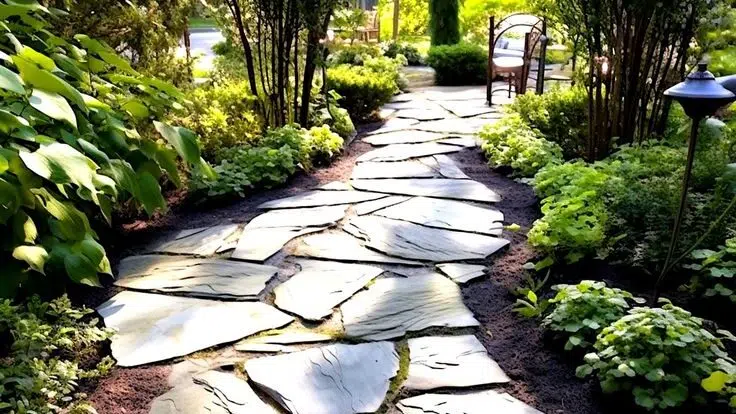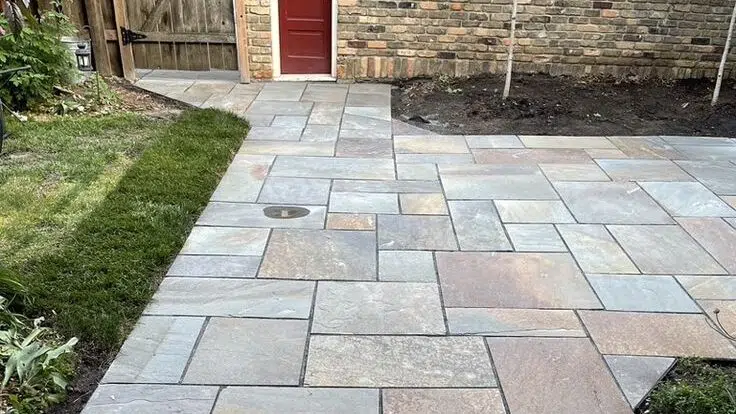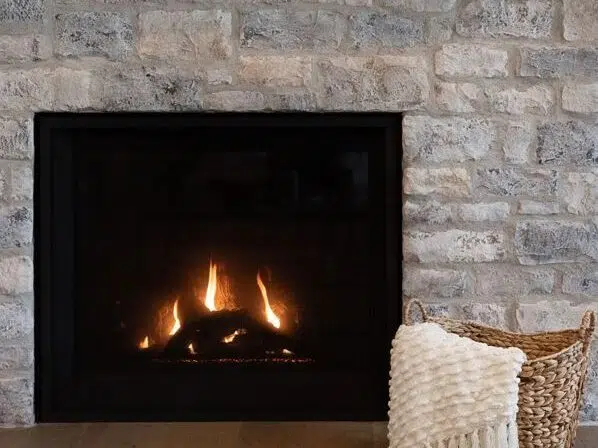Introduction
Recognize wear and tear, such as cracked bricks, crumbling mortar, and leaning or unstable stacks. Regular maintenance can reduce the need for costly repairs or rebuilding. Get an expert to evaluate the chimney to detect any damage. This will save you money in the long run.
Ignoring issues can put your home at risk of fires, water leaks, and other safety hazards. Repairing missing mortar joints or damaged flue tiles should be done immediately. Even if your chimney looks OK, get an inspection yearly. This helps find minor problems before they become expensive ones.
Chimneys were essential heating components for centuries. Knowing how to maintain them protects our families and properties now. Your chimney is sending out smoke signals that it needs TLC.
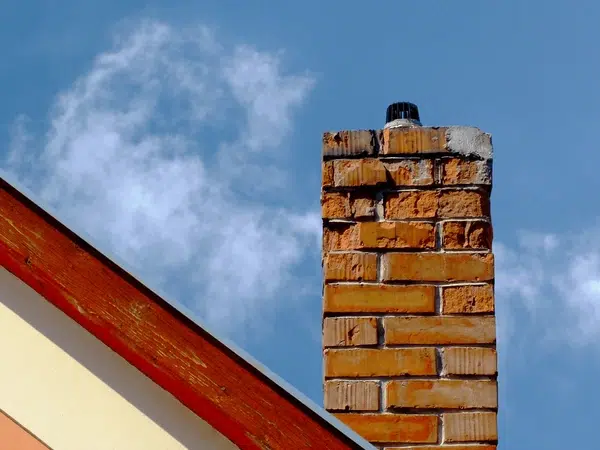
Signs that Your Chimney Needs Repair or Rebuilding
To identify signs that your chimney needs repair or rebuilding with chimney leaks or water damage, damaged or cracked chimney crown, shaling or spalling bricks, chimney odors or backdrafts, and difficulty starting or maintaining fires.
Chimney Leaks or Water Damage
Water damage in chimneys can be tricky to spot. It can start gradually. Leaks can occur through a flue liner, cracked brickwork, or bad mortar joints.
It’s important to fix any damage quickly, as it can damage the chimney’s structure. Plus, it can increase indoor humidity and cause mold or odors.
Don’t try DIY repairs unless you have experience. Contact an expert to check your chimney and identify problems.
Moisture wears away bricks and mortar joints, causing water seepage. So, get regular inspections from an experienced specialist.
To analyze chimney health, look for staining on walls and creosote buildup.
If the chimney crown is damaged or cracked, it won’t protect anything, and it looks bad.
Damaged or Cracked Chimney Crown
The Chimney Crown is vital for protecting your chimney from moisture and debris. Look out for signs of damage or cracks to avoid complications. These could be: water leaks, masonry deterioration, crumbling bricks, chimney leaning, debris, and efflorescence stains.
It’s important to take action if you spot any of these signs. Delay can cause safety risks as well as hefty repair costs. So, don’t hesitate to call professionals for help. Bricks falling apart? Time to get your chimney some attention, before it resembles the Leaning Tower of Fireplace!
Shaling or Spalling Bricks
Brick Deterioration due to Moisture Absorption
Wide cracks, peeling plaster and crumbling masonry joints are all signs of brick deterioration due to moisture absorption. This problem is commonly known as shaling or spalling. Rust stains, white powder, molds and mildew can also appear due to excess moisture. Plus, odd noises from the chimney flue are a warning sign.
If not taken care of, such deterioration can lead to structural damage that can cost a lot of money in repairs. Moisture intrusion and faulty flashing installation are the primary causes of brick peeling near chimneys.
It’s essential to watch out for any signs of brick shaling or spalling around the chimney exterior walls. If you notice this, it’s best to seek help from certified chimney experts to address it before it leads to further structural failures.
According to HomeGuides.SFGate.com, “Contact qualified masonry experts immediately when these signs become apparent.” Is that the smell of a warm fire or a moldy dungeon? Time to call the chimney sweep!
Chimney Odors or Backdrafts
Creosote, produced when burning wood and fuels, can clog the flue linings and restrict airflow. This creates foul odors and dangerous backdrafts. This issue must be identified and addressed quickly to protect human health.
Backdrafting happens when smoke enters the living room due to negative pressure override and fresh air coming in through gaps in the house. This can occur if the chimney is not the right size compared to the furnace vents.
Many homeowners wait until their heating bills surge before doing repairs, leading to potential damage. It’s vital to get regular inspections if you smell anything odd from the Flues or Chimney.
Tragedy struck two local families in the 1980s because of CO exposure from deteriorating chimney liners, inspiring Minnesota to adopt CO detectors in households. Now, it’s essential to have routine checks with occupancy sensors and take preventive measures, like tuck pointing bricks or adding new stainless-steel liners when needed.
Difficulty Starting or Maintaining Fires
If your chimney has trouble lighting or staying lit, it could be an indication of a bigger problem. This can be because of creosote accumulation, a blockage in the flue, or perhaps masonry damage. Address these problems right away as they can have serious consequences.
We have a 6-step guide to help you fix your fire troubles:
- Check for any obstructions in the chimney or flue
- Clean out any debris in the fireplace and stove
- Open up the damper before lighting a fire
- Use dry seasoned wood that’s been stored properly
- Don’t use extra paper or cardboard boxes as kindling
- Invest in a chimney cap to stop critters and debris from entering
Also, watch out for smoke circulating around the room. If smoke stays in the living area instead of exiting through the chimney, then there might be an air pressure issue. Check differences between other areas of your home and see if you have an air circulation issue.
Failing to act quickly can lead to more severe issues such as house fires, carbon monoxide poisoning, or costly repairs. If this happens, find help from a professional immediately.
Understand the signs that suggest repair needs so that your fireplace is functioning safely. Don’t take risks when it comes to keeping yourself and others safe at home. Always stay alert and take action quickly if necessary!
Keep your chimney in order with our repair and maintenance services, because a crumbling chimney is a real flue-pas.
Chimney Repair and Maintenance Services
To ensure your chimney’s longevity, identifying when it needs repairing or rebuilding is crucial. Chimney sweep, inspection, repair, and rebuilding are the fundamental services involved in chimney maintenance. In this section, you will explore these sub-sections and gain an understanding of how each one plays a vital role in maintaining your chimney’s structural integrity.
Chimney Sweep
Secure your home with our cost-effective Chimney Cleaning Services. Our experts use advanced equipment to get rid of creosote, dirt, and debris build-ups inside the flue. Avoid fire incidents! We provide regular upkeep and repair services for optimal performance and safety.
Our experienced technicians inspect the interior and exterior parts of the flue liners. They also detect any damage or cracks on the masonry work and repair them immediately to avoid safety risks. Our Sweeping follows industry standards, giving our customers reliable results.
Don’t risk it when it comes to Chimney Sweeping. Accumulated soot can block fresh air in your house and increase the danger of carbon monoxide poisoning. Get expert advice on preserving your chimney’s functionality and reducing health hazards.
Experience hassle-free cleansing, maintenance, and repair solutions with us – all at reasonable rates. Don’t wait – call us now! Inspecting your chimney is essential to catch problems early before they become a nuisance.

Chimney Inspection
A Guide to Examining Your Chimney – It’s Essential!
Regular inspection of your chimney is essential for the safety and efficiency of your fireplace. Here are five key points:
- Check for creosote buildup: This flammable residue can accumulate, causing dangerous fires.
- Inspect the inner lining: A cracked or deteriorating liner is a risk factor.
- Evaluate proper ventilation: Adequate airflow helps clear out smoke and gases. An obstructed chimney can cause carbon monoxide poisoning.
- Assess structural integrity: Bricks, mortar, or flashing damage could indicate water damage and structural issues.
- Detect any blockages: Leaves, critters, etc. will prevent exit for gases and pose a danger.
It’s important to understand that an inspection is more than sweeping the chimney. Certified inspectors use high-tech expertise and training. Trust their process – it could save lives.
Thinking of skipping inspections? Unfortunately, unclean chimneys lead to thousands of house fires each year – choose responsible upkeep instead. Chimney repair may not be glamorous, but ignoring it could be a disaster.
Chimney Repair
Our team of experts can help you keep your chimney in top condition. We identify & repair defects, unclog chimneys & provide structural improvements. Ignoring these problems could lead to serious damage & safety issues. Get our quality services to protect your investment.
We use industry-standard equipment for detailed chimney inspections. It helps us recognize all underlying issues & give effective solutions. According to NFPA, yearly inspections are required. Our experts make sure you pass all regulations & stay safe!
Do you need chimney repair services? We specialize in fixing masonry components like bricks, mortar, crowns, caps & flashing. We can also animal-proof your chimney to stop critters from entering. A chimney that needs rebuilding? Start afresh – like a bad relationship.
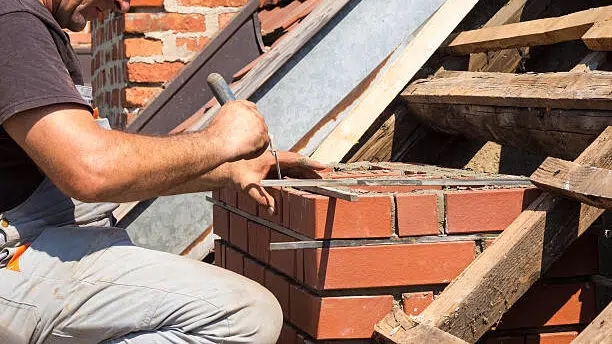
Chimney Rebuilding
Chimney Reconstruction is needed when a structure has deteriorated beyond repair. Professional masons will demolish the damaged chimney and build a new one that meets safety requirements and building codes.
Reasons for reconstruction include:
- age
- weather damage
- poor construction
Steps include demolishing the existing structure and building a new one from scratch. They’ll also consider: codes, draft efficiency, and flue sizing.
If more than 30% of the chimney is in disrepair, or if there’s severe structural damage, rebuilding is the only option. It’s best to seek professional help.
Recently, a property’s century-old chimneys were crumbling in the rain. A professional service completed successful repairs, maintained historicity, and stayed within budget and schedule.
Fixing your chimney now is much cheaper than waiting for Santa!
Costs of Chimney Repair or Rebuilding
To understand the costs associated with chimney repair or rebuilding, refer to this section from ‘How to Identify When Your Chimney Needs Repair or Rebuilding’ guide. Factors affecting the cost and estimated cost for common chimney repairs and rebuilding are briefly explained in the sub-sections. This will help you to have an approximate idea of the expenses that you may incur.
Factors Affecting the Cost
The price of repairing or rebuilding a chimney varies depending on various factors. These include:
- chimney size (height and width),
- material used (brick, stone or concrete block),
- extent of damage (cracks, missing bricks or stones)
- and labor cost (region and reputation of repair company).
These are not the only elements that affect chimney repair costs, but they are the most important ones to consider.
It’s also wise to do preventive maintenance. That way you can catch small issues before they become huge (and expensive) problems.
And remember, neglecting your chimney can put you at risk. Don’t let fear stop you from scheduling an inspection. It could end up saving you money in the long run.
But beware: the cost of repairing your chimney might have you wanting to start a bonfire instead!
Estimated Cost for Common Chimney Repairs and Rebuilding
Chimneys are key in homes. Knowing the costs for chimney repair and rebuilding is important. Here’s a table of estimated prices for common services:
| Services | Estimated Costs |
|---|---|
| Chimney Caps | $150 – $500 |
| Crown Repair | $1,000 – $2,500 |
| Flue Liner Repair | $2,500 – $7,000 |
| Brick Repointing | $5 – $12 per sq ft |
Prices can vary depending on the damage or the material used. It’s best to hire a professional for chimney maintenance and repair.
Did you know that in ancient times, chimneys weren’t common in houses? Smoke filled the homes when fires were lit inside. The concept of chimneys was popularized in Europe during the sixteenth century.
DIYing your chimney repair and rebuilding is not recommended – unless you want to set your house on fire!
Choosing a Professional Chimney Repair or Rebuilding Contractor
To choose a professional chimney repair or rebuilding contractor, you need to consider some factors. With licensing and certification, you can ensure the contractor’s qualifications meet your needs. Insurance and liability coverage can offer you peace of mind while repairs are being made. Reputation and reviews can provide insight into the contractor’s reliability, while experience and expertise can assure the job is done correctly.
Licensing and Certification
Confirm your chimney repair or rebuilding contractor’s licenses and certifications for credibility and reliability. Certified pros guarantee expertise and experience. Licenses show that contractors meet state or local requirements. Certifications prove training, knowledge, and ethical conduct.
Research the contractor’s reputation. Check past customers’ reviews and trusted referrals. Ensure the contractor prioritizes safety protocols for themselves and clients. Ask if they carry liability and worker’s compensation insurance.
After the project, a certified inspector must check it complies with codes and standards. A trustworthy contractor should guide clients through each step.
Hire a licensed, certified contractor with good reviews, proper insurance coverage, safety procedures, guidance through regulations, and technical expertise. This will save money and protect your chimney and wallet – no smoking or suing for breakfast!
Insurance and Liability Coverage
When picking a chimney repair or rebuild contractor, it’s imperative to ensure they have the right insurance and liability coverage. Ask for their policy details, limits, and if it covers any damages from their work. Get copies of their insurance certificates and verify them with the insurer.
Their general liability coverage should cover any accidents or damages on-site due to their negligence. Check your homeowners’ policy too, as it could offer extra protection for any damages beyond what the contractor’s coverage covers.
Figure out everything you need to know about their insurance and coverage before hiring them. Don’t wait until something goes wrong! Make sure your contractor is reliable and has adequate measures in place to protect themselves and your home.
Reputation and Reviews
Selecting a pro chimney repair contractor?
It’s important to take your time & analyze feedback related to the different contractors.
- Research online reviews & ratings.
- Request references from satisfied clients.
- Inspect their portfolio to evaluate work quality.
- Are they licensed & insured?
- Check third-party platforms for any bad rep or negative remarks.
“A good reputation = more valuable than money” ~ Publilius Syrus.
To avoid a Leaning Tower of Pisa-like chimney, choose an experienced & knowledgeable professional.
Experience and Expertise
When it comes to chimney repair or rebuilding, you need a skilled and experienced contractor. They must possess extensive knowledge and expertise for the successful completion of any project.
Their long-term experience in fixing a variety of chimneys equips them with specific skills in masonry, gas lines, firebox repairs, flues, caps, and installations.
Besides technical know-how, communication is essential. A contractor must be able to understand customer instructions and provide accurate cost estimates and timely completion dates.
Moreover, they should prioritize customer satisfaction by offering quality repairs within budget. Warranties for services should also be given.
Research online reviews and speak to local fireplace stores or masonry companies for recommendations before hiring. Pick someone familiar with local building codes and regulations to ensure compliance with any required permits.
Combine experienced craftsmanship with great communication for successful chimney projects – choose wisely! Don’t wait until the chimney is collapsing – get a professional now – it’s not a DIY task!
Conclusion
Maintaining your chimney is essential to its longevity. Regular upkeep and repair can stop major harm and expensive rebuilding. Check for signs of damage, like missing mortar, cracked bricks, or a leaning structure.
It’s important to have a professional inspect it annually. During an inspection, they will locate any cracks or other problems that need solving. Identifying issues early stops bigger repairs and also saves money. Homeowners should prioritize regular maintenance to dodge costly repairs or rebuilds.
Pro Tip: Install a chimney cap. It prevents moisture from entering and decreases the amount of debris that collects in the chimney, reducing potential fire hazards.
Frequently Asked Questions
- How do I know if my chimney needs repair or rebuilding?
- A chimney that requires repair or rebuilding may exhibit signs such as cracks in the masonry, crumbling mortar, leaning or settling, and water damage. Additionally, if you notice smoke inside after lighting a fire or a strange smell, it may be an indication of a problem with your chimney.
- What is the difference between chimney repair and rebuilding?
- Chimney repair involves fixing the damage to the existing structure, while rebuilding involves demolishing the existing chimney and rebuilding it from scratch. Rebuilding is necessary in cases where the damage to the chimney is severe or the chimney is no longer structurally sound.
- How often should I have my chimney inspected?
- It is recommended to have your chimney inspected by a masonry expert at least once a year to ensure that it is in good condition and safe to use. However, if you use your chimney frequently, you should consider having it inspected more frequently.
- Can I do chimney repairs myself?
- While minor chimney repairs can be done by a homeowner, it is recommended to consult with a masonry expert for larger repairs or rebuilding. Attempting to repair a chimney without the necessary expertise can be dangerous and may result in further damage.
- What is the average cost of chimney repair or rebuilding?
- The cost of chimney repair or rebuilding depends on the extent of the damage and the type of materials used. On average, homeowners can expect to pay anywhere from a few hundred dollars for minor repairs to several thousand dollars for a complete chimney rebuild.
- How can I prevent my chimney from needing repairs or rebuilding?
- The best way to prevent the need for chimney repairs or rebuilding is to ensure regular maintenance. This includes having your chimney inspected annually, cleaning it regularly, and making necessary repairs as soon as they arise.

